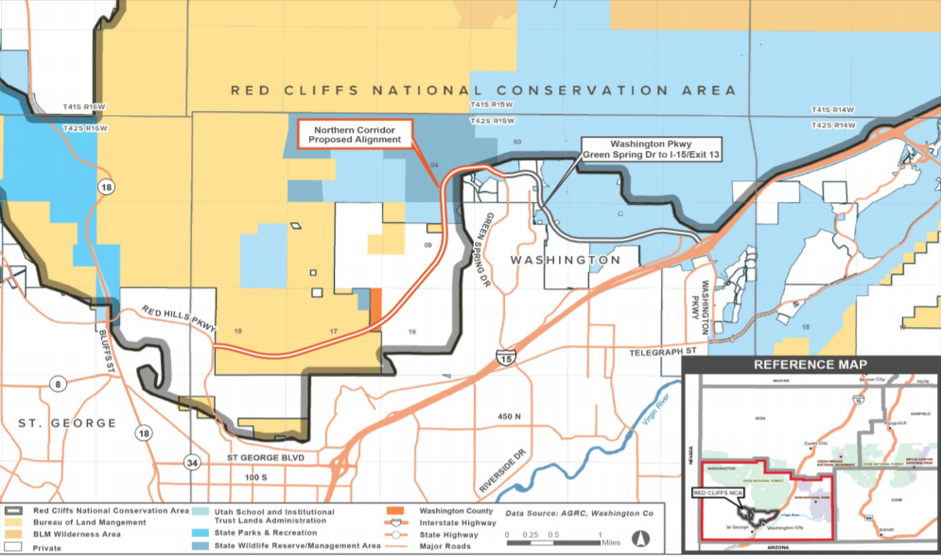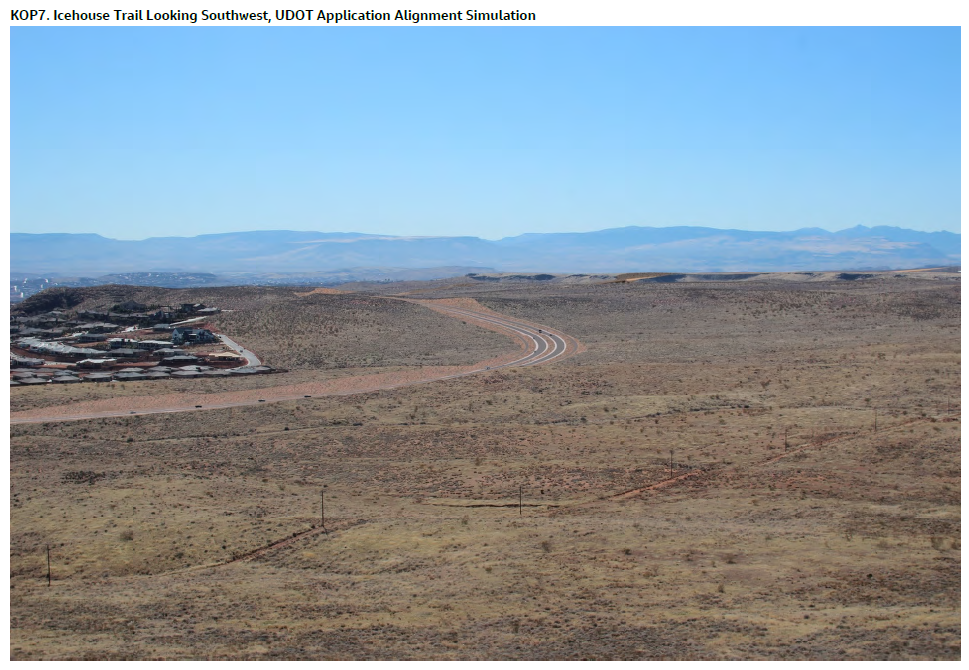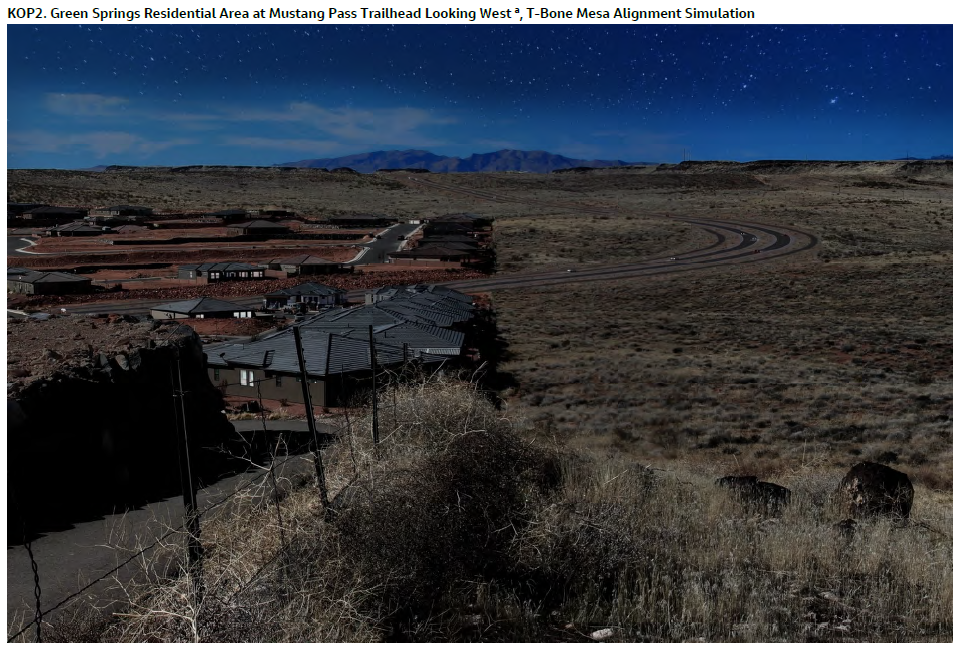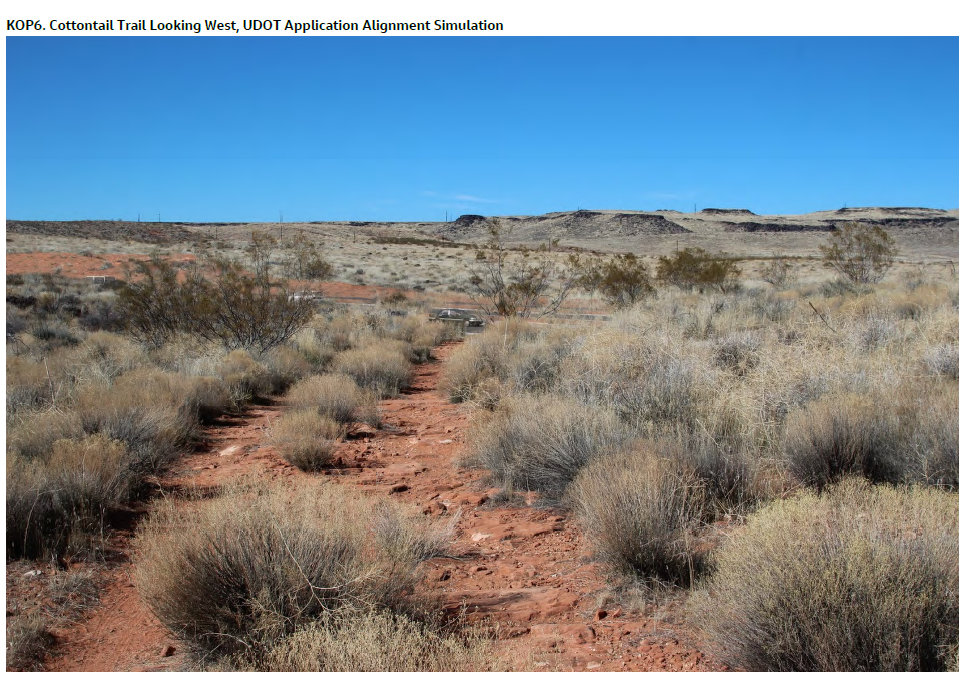6. Impacts to homeowners are not adequately addressed
What the Draft EIS does or doesn’t say:
- Noise, light, litter, scenic, recreational, health, and property value impacts to homeowners near the NCH were not adequately addressed.
- The Draft EIS states that noise modeling (estimating increases in noise levels due to the NCH) and consideration of noise barriers (sound walls) will occur later[1].
- The Draft EIS studied 12 Key Observation Points (KOPs),[2] or points on a travel route where the view of the highway would be most revealing. Of these 12 KOPs, 4 were adjacent to Green Springs or Middleton, revealing the major impact the NCH will have on these residents. (See images below).
The problem:
- The Draft EIS glosses over scenic resources and noise impacts, and fails to consider impacts to property value, human health and safety, and quality of life.
- BLM dismisses considering the Washington Parkway Extension (WPE) as a connected action to the NCH.[3] In doing so, they fail to consider the negative impacts to residents in Brio and Warm Springs that would result from the new highway connecting to the WPE. (See map below).
- BLM fails to incorporate a recent noise study completed for the WPE which concluded noise levels would increase by more than 30 dBA in some locations (double the normal noise level). Since the NCH is similar to the WPE and will connect to it, this study should be referenced to fully consider data relevant to the NCH.
- By failing to analyze noise level increases and sound walls in the Draft EIS, the public is cut out from commenting on critical issues that affect their health, quality of life and property values.
- BLM carefully analyzes impacts to businesses and homeowners that would be caused by transportation alternatives outside Red Cliffs (Red Hills Parkway Expressway and One-Way Couplet), yet it fails to provide a reasoned analysis of the economic impacts to the homeowners in Green Springs that would be caused by any of the highway alignments inside Red Cliffs.
- The BLM considers human health and safety impacts to recreational users, but not to residents adjacent to the NCH who would suffer from highway lighting, traffic noise, litter, and air pollution on a daily basis.
Commenting guidance:
- Scoping requests made by residents of Green Springs, Middleton, Warm Springs and Brio asked for the BLM to consider NCH impacts related to scenery, noise, light, health, property value, and quality of life. These requests were ignored.
- Negative impacts to thousands of residents living in Middleton, Green Springs, Warm Springs and Brio were not adequately addressed. Approval cannot be allowed without considering these impacts.
Use elements of the “problem” statements to bolster your point.
Add a personal note:
- Are you a home owner in one of the neighborhoods adjacent to the proposed highway? How do you feel about this project?
- What concerns do you have that weren’t addressed by the BLM?
[1] DEIS Vol 2, page 3-159
[2] DEIS Vol 3, Attachment 2: Key Observation Points. Page 427
[3] DEIS Vol 2, page 1-7
Map of Northern Corridor Highway and Washington Parkway Extension

If approved, the Northern Corridor Highway (orange line) would connect to the brand new Washington Parkway Extension (white line). Homeowners in Middleton, Green Springs, Brio, and Warm Springs would be significantly impacted.
Northern Corridor Highway Simulations from the Draft EIS

The Northern Corridor Highway will travel within 50 feet of homes at the northern end of Green Springs.

A massive bridge would be required to span Middleton Wash and would be located within 1,500 feet of some homes in Middleton.

The impacts of light pollution on human health and dark night skies were not adequately addressed in the Draft EIS.


